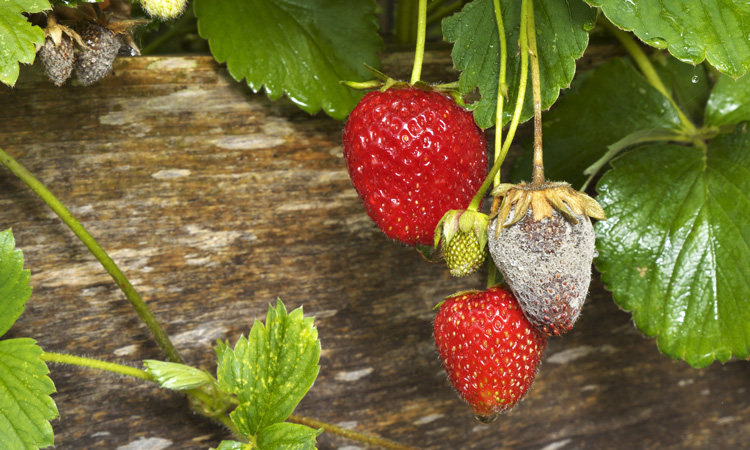Study findings pave the way for environmentally friendly fungicides
- Like
- Digg
- Del
- Tumblr
- VKontakte
- Buffer
- Love This
- Odnoklassniki
- Meneame
- Blogger
- Amazon
- Yahoo Mail
- Gmail
- AOL
- Newsvine
- HackerNews
- Evernote
- MySpace
- Mail.ru
- Viadeo
- Line
- Comments
- Yummly
- SMS
- Viber
- Telegram
- Subscribe
- Skype
- Facebook Messenger
- Kakao
- LiveJournal
- Yammer
- Edgar
- Fintel
- Mix
- Instapaper
- Copy Link
Posted: 21 July 2020 | Sam Mehmet (New Food) | No comments yet
The study has identified a sub class of peptides which inhibit to growth of Botrytis cinerea, a grey mould causing fungus which is said to be a major problem for farmers growing strawberries, grapes, raspberries, tomatoes and lettuce.


Donald Danforth Plant Science Center scientists and lab collaborators have identified a sub class of peptides in the nodules of the legume Medicago truncatula that proved effective in inhibiting growth of the fungus causing grey mould.
Fungal diseases such as grey mould caused by Botrytis cinerea cause substantial losses of agricultural harvests across the world each year. To mitigate the problem, they often resort to applying chemical fungicides which can lose effectiveness over time, the researchers explained.
“We are excited about the possibility of developing this class of peptides as a spray-on fungicide that would provide farmers with an environmentally friendly alternative to chemical fungicides for pre- and post-harvest management of fungal diseases,” said researcher Dilip Shah. “When applied to crops, the peptides will eventually break down to amino acids in the soil and be used by beneficial microbes as an energy source.”
Shah and his team produced recombinantly large quantities of the highly charged NCR044 peptide that is expressed in the nodules of the legume. They then applied the peptide in low concentrations to tobacco and tomato plants in the lab and challenged the plants with the grey mould fungus. The plants showed significant protection from this fungal disease.
To understand the antimicrobial mechanism within the cell, they collaborated with Kirk Czymmek from the Advanced Bioimaging Laboratory. Using time-lapse confocal and super resolution microscopy, the team was able to observe dynamically how the peptide binds to fungal spores and germlings, how it is internalised and where it goes inside the fungal cell. One key finding was the confirmation that the peptide concentrated in the nucleolus, the organelle where ribosomal assembly takes place.
Shah and Czymmek explained that they will continue their research and have applied to the National Science Foundation for a grant to further explore how antifungal nodule-specific peptides kill harmful fungal pathogens in vitro and in planta.
Related topics
Environment, Mycotoxins, New product development (NPD), Research & development








